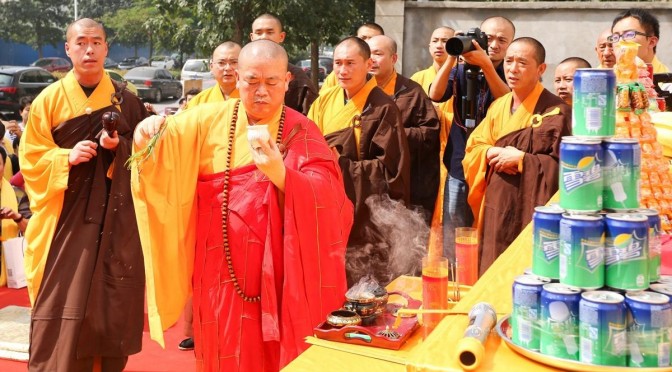Artificial Intelligence and old computing
My great passion has always been machines, learning about new technologies and science. Our professor was frustrated because I always complained when he portrayed old technologies that had been in existence for over a hundred years. I was a class rebel no doubt.
May you rest in peace, Professor Szrubar. Were you alive today you would not understand where we have reached in science.
One Professor in particular - he was so stern and one way - introduced us to our first computing experience. The power of the machine - which was one of the first in the country, compared to it's size ( it filled a whole room of 30 sq m ) - was incomparable to what we have today.
I am unsure if he will read this, I guess he is too advanced in age to do so, but if you do, Professor Hoerdler, greetings to you.
Welcome to Artifical Intelligence
I welcome you to this session on Artificial Intelligence's full course. In this video, I'll be covering all the domains and the concepts involved under the umbrella of artificial intelligence, and I will also be showing you a couple of use cases and practical implementations by using Python.
Understanding the history of Artificial Intelligence
There's a lot to cover in this session, and let me quickly run you through today's agenda. Understanding the history of artificial intelligence and how it came into existence. We'll follow this by looking at why we're talking about artificial intelligence now,why has it gotten so famous right now. Then we'll look at what exactly is artificial intelligence. We'll discuss the applications of artificial intelligence, after which we'll discuss the basics of AIwhere in we'll understand the different types of artificial intelligence.Python and AI
We'll follow this by understanding the different programming languages that can be used to study AI. And we'll understand why we're gonna choose Python. Alright, I'll introduce you to Python. And then we'll move on and discuss machine learning. Here we'll discuss the different types of machine learning, the different algorithms involved in machine learning, which include classification algorithms, regression algorithms, clustering,and association algorithms. To make you understand machine learning better,we'll run a couple of demoswherein we'll see how machine learning algorithmsare used to solve real world problems.
After that, we'll discussthe limitations of machine learning and why deep learning is needed. I'll introduce you to the deep learning concept, what are neurons, perceptrons, multiple layer perceptrons and so on. We'll discuss the different types of neural networks,and we'll also look at what exactly back propagation is. Apart from this, we'll be running a demoto understand deep learning in more depth. And finally we'll move onto the next module,which is natural language processing. On the natural language processing, we'll try to understand what is text mining, the difference between text mining in NLP, what are the different terminologies in NLP,and we'll end the session by looking atthe practical implementation of NLP using Python, alright.
Greek mythology and Artificial Intelligence
There's a lot to cover in today's session. If you want to stay updated about the recent technologies, and would like to learn more about the training technology, make sure you subscribe to our main AfricAsiaEuro Homepage to never miss out on such sessions. So let's move ahead and take a look at our first topic which is history of artificial intelligence. So guys, the concept of artificial intelligence dates back to the classical ages. Under Greek mythology, the concept of machines and mechanical men were well thought of. An example of this is Talos.
TALOS
I don't know how many of you have heard of this. Talos was a giant animated bronze warrior who was programmed to guard the island of Crete. Now these are just ideas. Nobody knows if this was actually implemented, but machine learning and AI were thought of long ago. Let's get back to the 19th century. 1950 was speculated to be one of the most important years for the introduction of artificial intelligence. In 1950, Alan Turing published a paperin which he speculated about the possibility of creating machines that think. So he created what is known as the Turing test. This test is basically used to determine whether or not a computer can think intelligently like a human being. He noted that thinking is difficult to defineand devised his famous Turing test.
Deep Learning and Artificial Intelligence
So, basically, if a machine can carry out a conversationthat was indistinguishable from a conversation with a human being, it was reasonable to say that the machine is thinking, meaning that the machine will pass the Turing test. Unfortunately, up to this date, we haven't found a machine that has been fully cleared the Turing test. The Turing test was actually the first serious quest in the philosophy of artificial intelligence. Followed by this was the era of 1951. This was also known as the game AI. In 1951, by using the Ferranti Mark 1 machine of the University of Manchester, a computer scientist known as Christopher Strachey wrote a checkers program.
ALEXA, SIRI, MIT LAB - Artificial Intelligence
And at the same time,a program was written for chess as well. Now, these programs were later improved and redone, but this was the first attempt at creating programs that could play chess or that would compete with humans in playing chess. This is followed by the year 1956. Now, this is probably the most important year in the invention of AI. Because in 1956, for the first time, the term artificial intelligence was coined. Alright. So the term artificial intelligence was coined by John McCarthy at the Dartmouth Conference in 1956. Coming to the year 1959,the first AI laboratory was established. This period marked the research era for AI. So the first AI lab where research was performed is the MIT lab, which is still running till date. In 1960, the first robot was introduced to the General Motors assembly line. In 1961, the first chatbot was invented. Now we have Siri, we have Alexa.
Who is Eliza ?
But in 1961,there was a chatbot known as Eliza, which was introduced. This is followed by the famous IBM Deep Blue. In 1997, the news broke downthat IBM's Deep Blue beats the world champion,Garry Kasparov, in the game of chess. So this was kind of the first accomplishment of AI. It was able to beat the world champion at chess. So in 2005, when the DARPA Grand Challenge was held,a robotic car named Stanley,which was built by Stanford's racing team,won the DARPA Grand Challenge. That was another big accomplish of AI. In 2011, IBM's question answering system, Watson,defeated the two greatest Jeopardy champions, Brad Rutter and Ken Jennings. So guys, this was how AI evolved. END OF PART 1 READ MORE NEXT ON OUR MAIN - VISIT NOW: AfricAsiaEuro


